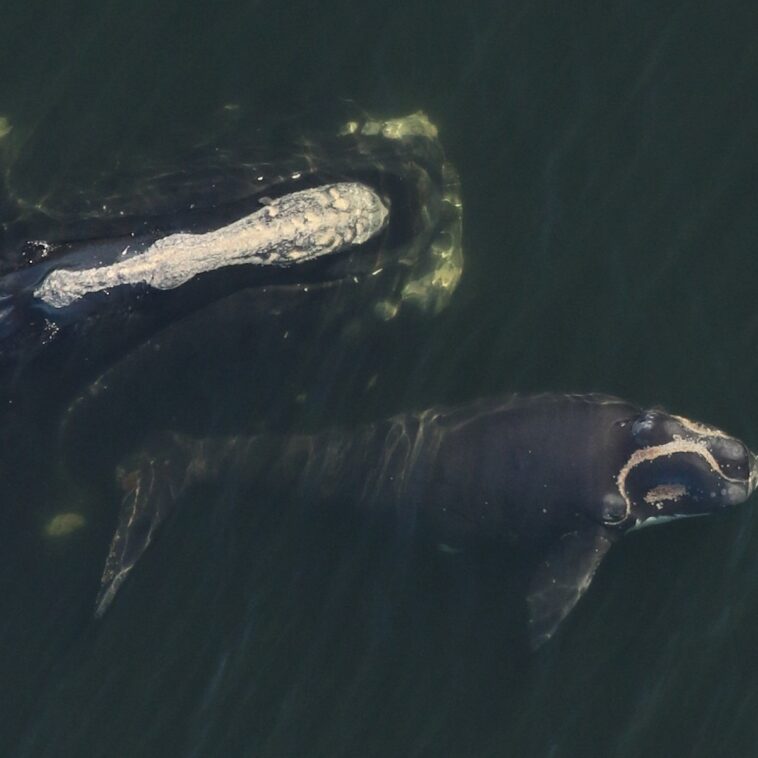Add a calf and another first-time mother to the calving season totals.
The 18-year-old female called Check Mark, whale No. 3705 in the North Atlantic right whale catalog, was seen with a calf about 9 nautical miles of Amelia Island on Jan. 17. That bumps the calf count this winter to seven.
The sighting by the Florida Fish and Wildlife Conservation Commission’s aerial survey team came a day after the season’s sixth mom and calf were spotted , also off Amelia Island. But that mom — Grand Teton (catalog No. 1145) — was over 44 years old and the calf was her ninth. For Check Mark, this is her first known calf.
Named after a partially sliced off fluke that now resembles a check mark, this new mom has a well documented lineage. More than 25 members of her family are in the whale catalog curated by New England Aquarium. That includes parents mom Smoke (No. 2605) and dad Velcro (1306), grandparents Sliver (1227) and Phoenix (1705), and great-grandparents King Richard (1147) and Mavynne (1151), plus six siblings, three nieces and nephews, four aunts and uncles, one cousin, and seven great aunts and uncles.
Welcome to motherhood: Check Mark and her first known calf off Amelia Island, Fla., Jan. 17 (FWC/NOAA permit 26919)
FWC’s Fish and Wildlife Research Institute notes that while many right whales first give birth at ages 8-12 — females become sexually mature at about 10 — the timing for becoming a mother has trended older in recent years. For example, Caterpillar (No. 3503) is another first-time mom this winter, and she’s at least 20 years old.
In addition to the energy demands of pregnancy and nursing, scientists point to stress caused by entanglement in commercial fishing gear and collisions with ships and boats (both Check Mark and Caterpillar bear scars from vessel strikes), along with finding enough food, as reasons why these endangered whales are calving later and less often, according to the Fish and Wildlife Research Institute. NOAA considers three years between calves “normal or healthy.” But females are now averaging a calf every 7-10 years.
Which makes every mom and calf even more special.
WHAT YOU CAN DO
You may have heard, or read, this before, but it bears repeating: When boating off the Southeast Atlantic’s coast from November to April, follow guidelines for Navigating in Right Whale Waters (here’s a flyer that sums it up for recreational boaters):
- Slow down when boating where right whales are present. Use the Whale Alert app to know if whales are possibly in the area.
- Keep watch. Look for dark objects at the surface, large splashes, fluke swirls (slick spots on the surface) and recurring whitewater that could be made by a whale’s tail, and the “V” shaped spout whales create when they breathe.
- Report sightings by calling 877-WHALE-HELP (877-942-5343) or by hailing the U.S. Coast Guard on marine VHF channel 16.
- If you spot a whale, slow down further, operate at slow speed or put your engine in neutral. Assess the scene and slowly leave the area while keeping watch—other whales could be nearby. Stay at least 500 yards from any right whale you see (it’s the law) and never pursue or follow one.
(If used by media or other outlets, the right whale images in this post must include the following: Taken by Florida FWC under NOAA permit 26919. Also note that it is illegal to approach right whales in U.S. waters without a research permit. Other vessels, aircraft and drones must maintain a distance of at least 500 yards from these endangered whales.)




GIPHY App Key not set. Please check settings